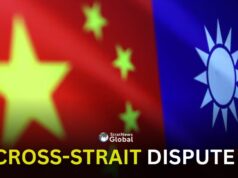
China promised on Thursday to raise the budget deficit, issue additional debt, and ease monetary policy to sustain stable economic growth amid expected trade tensions with the U.S. as Donald Trump returns to office.
The remarks came in a state media readout of an annual agenda-setting meeting of the country’s top leaders, known as the Central Economic Work Conference (CEWC), which was held on Dec. 11-12.
“The adverse impact brought by changes in the external environment has deepened,” national broadcaster CCTV said following the closed-door CEWC.
This year’s meeting comes as the world’s second-largest economy is stuttering due to a severe property market crisis, high local government debt and weak domestic demand. Its exports, one of the few bright spots, are facing the threat of higher U.S. tariffs.
The CEWC pledges match the tone of one of the Communist Party leaders’ most dovish statements in more than a decade, which was released on Monday after a meeting of the Politburo, a top decision-making body.
The Politburo said China would switch to an “appropriately loose” monetary policy stance, “more proactive” fiscal levers, and step up “unconventional counter-cyclical adjustments.”
In the same vein, the CEWC summary flagged a higher budget deficit and more debt issuance at a central and local government level. Leaders also vowed to reduce bank reserve requirements and cut interest rates “in a timely manner”.
“The direction is clear, but the size of stimulus matters, which we probably will find out only after the U.S. announces the tariffs,” Zhiwei Zhang, chief economist at Pinpoint Asset Management, said.
This dovish shift in messaging shows China is willing to go even deeper into debt, prioritising, at least in the near term, growth over financial risks, analysts said.
At CEWC, Beijing sets targets for economic growth, the budget deficit, debt issuance and other variables for the year ahead. The targets are agreed at the meeting, but won’t be officially released until an annual parliament meeting in March.
Reuters reported last month that government advisers recommended that Beijing keep its growth target of around 5% unchanged next year.
The CEWC readout said it was “necessary to maintain steady economic growth,” but did not mention a specific number.
“Maintaining 5% will be quite challenging in 2025, given that the extra ‘Trump shock’ will hit exports” and capital expenditure, Xu Tianchen, senior economist at the Economist Intelligence Unit, said.
“However, a good level of stimulus will prevent a freefall, and I don’t think growth will tank below 4.5%.”
Trump’s Tariff Threats
Trump’s tariff threats have rattled China’s industrial complex, which sells goods worth more than $400 billion annually to the United States. Many manufacturers have been shifting production abroad to escape tariffs.
Exporters say the levies will further shrink profits, hurting jobs, investment and growth in the process. They would also exacerbate China’s industrial overcapacityand deflationary pressures, analysts said.
A Reuters poll last month predicted China will grow 4.5% next year, but also suggested that tariffs could impact growth by up to 1 percentage point.
If exports take a hit, China needs to look internally for a new growth engine. But consumers feel less wealthy due to falling property prices and minimal social welfare. Low household demand is a key risk to growth.
Beijing has issued increasingly forceful statements on boosting consumption throughout the year, but it has offered little in terms of policies apart from a subsidy scheme for purchases of cars, appliances and a few other goods.
The CEWC summary said the scheme would be expanded and that efforts would be made to increase household incomes and “vigorously boost consumption.”
“Markets could be encouraged,” Lynn Song, ING’s chief economist for Greater China, said. “The call to vigorously boost consumption is a good sign.”
(With inputs from Reuters)




